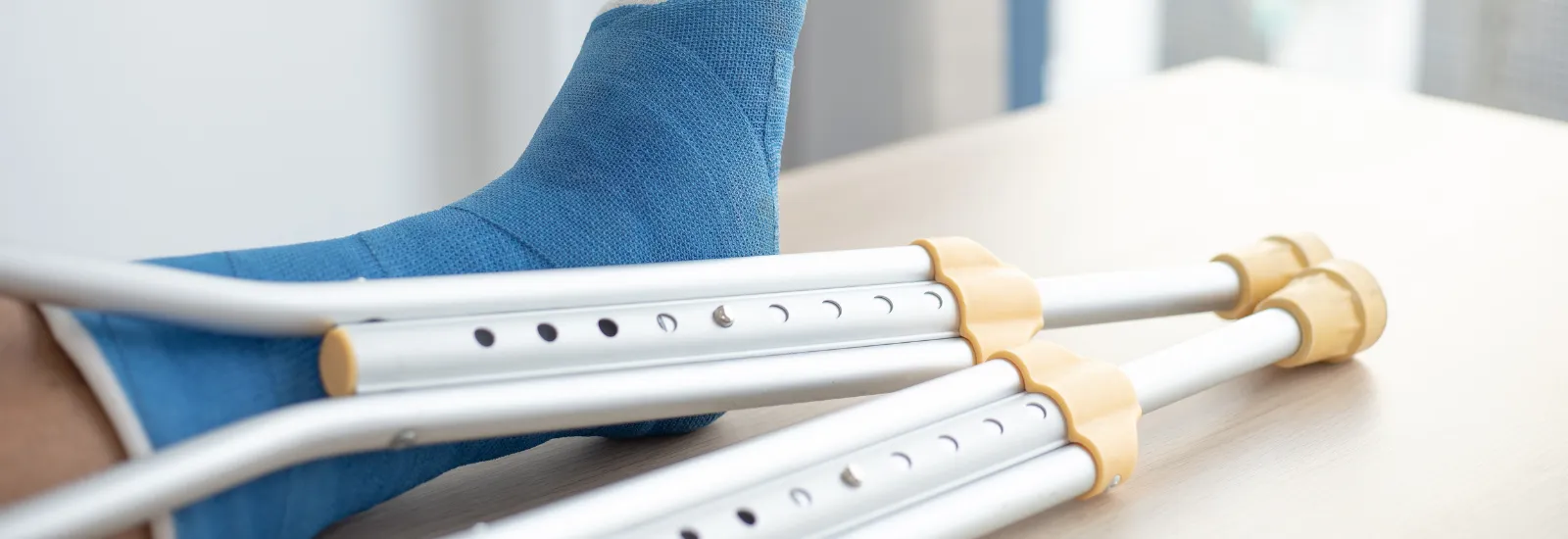
How and when to use crutches, canes, or walkers
Whether
you need temporary or permanent assistance, the right walking aid will help you
recover from injury or maintain independent mobility. Not sure which one you
need? Read below to learn more.
Crutches
Crutches
are a useful tool when you need to keep weight completely off a lower extremity
like the foot, ankle, knee, or hip after surgery or while recovering from an
injury like a broken bone. Balance, some upper
arm strength, and two hands are required to walk safely with crutches. If
you're not sure whether you need crutches or a partial weight-bearing walking
aid like a cane or walker, seek medical advice.
Fitting crutches correctly
For any walking aid, the proper fit reduces the risk of falls
or additional pain. To get the right fit:
●
Stand up straight with
shoes on.
●
Placing the crutches
under your arms allows
your arms to relax and hang naturally.
●
Aim for a gap of up to
two inches between your armpit and the top of the crutch.
●
The handgrips should
reach the crease of your wrist, allowing for a slight bend in the elbow.
Walking with crutches
After
fitting your crutches, grasp the handgrips and move both crutches forward at
the same time. Place your weight on the handgrips as you swing your "good" leg
forward, landing in between the crutches. A shorter stride may improve your balance, so avoid extending the crutches
farther than you can comfortably reach.
Sitting, standing, and stairs
When
climbing up steps, use both crutches and grab the handrail for extra support if
needed. However, when walking downstairs on crutches, it's safer to lean on one
crutch and the handrail while someone holds the other crutch and walks beside
you. Give yourself plenty of time, move slowly and carefully, and avoid crowds
on stairs if possible.
When
sitting or standing, hold both crutches in one hand and place your other hand
on a chair to maintain balance. Don't be afraid to ask
someone for help if you need it!
Don't need crutches? Try a cane or walker
If
your injury allows for partial weight-bearing movement, canes or walkers provide an excellent alternative to crutches.
They will prevent needing to lean entirely on your upper body for support.
How do I walk with a cane correctly?
A
cane that is too high can interfere with balance and increase your risk of
falling, while a cane that is too low may cause you to stoop and hurt your
back. Standing up straight with your arm hanging naturally, the handgrip on
your cane should meet the crease in your wrist. Your arm should have a slight
bend which improves stability as you walk.
Stepping out safely
Once
your cane is adjusted, follow these steps to start walking comfortably:
●
Hold the cane with the
hand on the opposite side of the injured body part.
●
Step forward with your
weak leg, moving the cane forward at the same time.
●
Set the cane down
parallel to your foot on the injured side.
●
Bear partial weight on
the injured leg and place your remaining weight on the cane as you step forward
with your "good" leg.
Should I use a cane for pain relief in my hip?
A
cane can be a great tool to use for hip pain by taking some pressure off the
affected hip. There's no difference in walking when using a cane for hip pain,
just ensure a good fit for your height and move slowly until your body adjusts
to the new walking aid.
When should I use a walker?
If
your injury allows for partial weight-bearing movement but you need extra
support to maintain your balance, a walker is another great option. A walker is
the most supportive walking aid but can be bulky and can't be used on stairs. A
variety of walkers is available, including folding, walkers with seats, and
with wheels. A lightweight walker with four rubber "feet" is a good option if
stability and balance are serious concerns.
Whichever
walking aid you need, let the experts at Reid Health Comprehensive Bone &
Joint Center give you the care and attention you
deserve. Find a location near you today.

